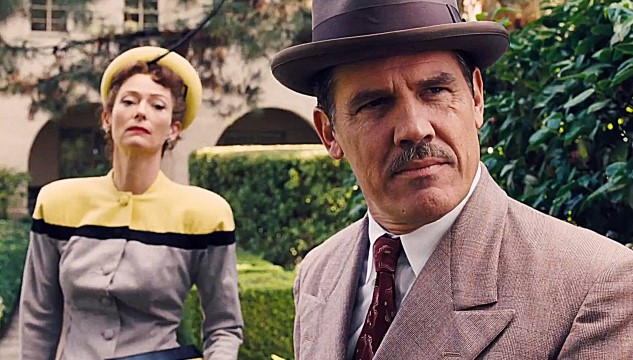What is the significance of the late studio-era Hollywood setting in “Hail, Caesar!”?
Quick Answer: Despite their penchant for period films, the Coen Brothers tend not to focus on exploring the historical context or accuracy of a given period; rather, they use the settings as a springboard from which the story can unfold. The setting itself is just a way to lay ground for a more timeless story. This is true of their most recent film, Hail, Caesar! Though the Coen Brothers have little to say about the film’s late studio-era Hollywood setting, it proves to be fecund territory for exploring the protagonist’s conflicted morals as a film producer. Furthermore, the film is an affectionate jab at the silliness of the 1950s studio system, using the setting to poke fun at the parodies and pastiches of old Hollywood.
Joel and Ethan Coen have traveled all over the 20th century with their films; beginning in the 1920s with Miller’s Crossing (1990), they have at least one story set in nearly every decade up to the present. However, the Coens tend not to focus on exploring the historical context or accuracy of a given period; rather, they use it as a springboard from which the story can unfold. Sometimes the film’s period setting bears small resemblance to the real thing. For example, the quasi-musical comedy O Brother, Where Art Thou? (2000) presents a heavily romanticized version of the Depression-era deep south that feels more like a mythical picaresque than 1930s America. Broadly speaking, realism never robs style in a Coen brothers movie.
Furthermore, even when one of the brothers’ films seems period accurate, it is usually neither dependent on that period nor committed to representing it. Take Barton Fink (1991): it’s a World War II-era drama in which the war is only mentioned in passing. The setting itself is just a way to lay ground for a more timeless story, not to mention a great excuse for some fun production design, costumes and character acting. In most ways, Hail, Caesar! (2016) is no exception to this rule.

Channing Tatum in Hail, Caesar! (2016)
Hail, Caesar! is more invested in its period setting than other Coen movies, but story is still key. Set in the early 1950s, Caesar is a day in the life of Eddie Mannix (Josh Brolin), a production head of the fictional Capitol Pictures. Mannix begins his day well before dawn, protecting the perfect images of his imperfect actors on contract and ensuring that Capitol continues to crank out pictures for all audiences in spite of myriad setbacks. The most period accurate element of Hail, Caesar! is the nature of the movies that Capitol is making; it’s all schlocky escapism, from the overwrought ancient Roman epic after which the film is titled, to the plotless gun slinging western, to the impossibly pretentious chamber drama. Beyond the films themselves, the costumes, the lingo, and most importantly, the basis of the plot are what you might have expected to see in late studio-era Hollywood.
Of course, the amount of attention paid to the film’s chosen period is less important than the meaning behind it. So what is meaningful about the setting in Caesar? In an interview on Meet the Filmmaker, the Coens were characteristically disingenuous on the subject. According to Joel, the film originated with curiosity about the real-life Eddie Mannix, on whom Brolin’s character is extremely loosely based. Ethan added that the time period was appropriate for the eponymous swords-and-sandals epic. Beyond that, they had little to say on the period. In short, there is a superficial answer endorsed by the directors: the setting is what allows them to make a movie about the fictional movie Hail, Caesar! and the studio head behind it. Indeed, the Coens themselves admit to having done little research into real events of the period, not wanting history to ruin a good story; the research that was done was technical, solely for the sake of accurate sets and costume design.

George Clooney in Hail, Caesar!
Despite the brothers’ seemingly insouciant decision to set their film in late studio-era Hollywood, the period provides the perfect backdrop for a morally conflicted protagonist. Brolin’s Mannix spends most of the film covering up legal and moral problems that might reflect poorly on the studio, and the real Mannix and others like him covered up more damaging stories. Here arises perhaps the most compelling justification for the setting of the film. Mannix, though seemingly a man of scruples, is continuously engaged in resolving or hiding the unsightly problems of every performer in the studio. Though Mannix considers the films to have great intrinsic worth beyond their commercial value, he repeatedly has to resort to underhanded methods to ensure their production and success. This issue of moral conflict forms Caesar’s thematic backbone. Arguably, the studio-era setting allows for the exploration of internal conflict in a character whose job is to maintain the studio’s polished, functioning façade.

Tilda Swinton and Josh Brolin in Hail, Caesar!
However, laying aside the pretension of seeking a meaty and meaningful interpretation, there is another, more obvious reason for the setting. While Caesar does have a strong dramatic thread centered on Mannix, it is as much a showcase—and a generous one at that—of parodies and pastiches of old Hollywood. The film is an affectionate jab at the silliness of the 1950s studio system. Given the Coen’s strict attention to detail, the film is peppered with set pieces that deal only nebulously with the main plot but serve as wonderful introductions to colorful characters and bygone forms of entertainment. Indeed, Channing Tatum’s Gene Kelly-style extended song-and-dance sequence had no necessary place in the bare plot, but the scene is delightful, and Hail, Caesar! exists as much for scenes like it as it does for the Mannix arc. Ultimately, the film’s setting is all about bringing a great old-timey variety show to the big screen. If the setting’s entire purpose served only to bring us the “Would that it were so simple” scene, Caesar’s existence would already be justified.

